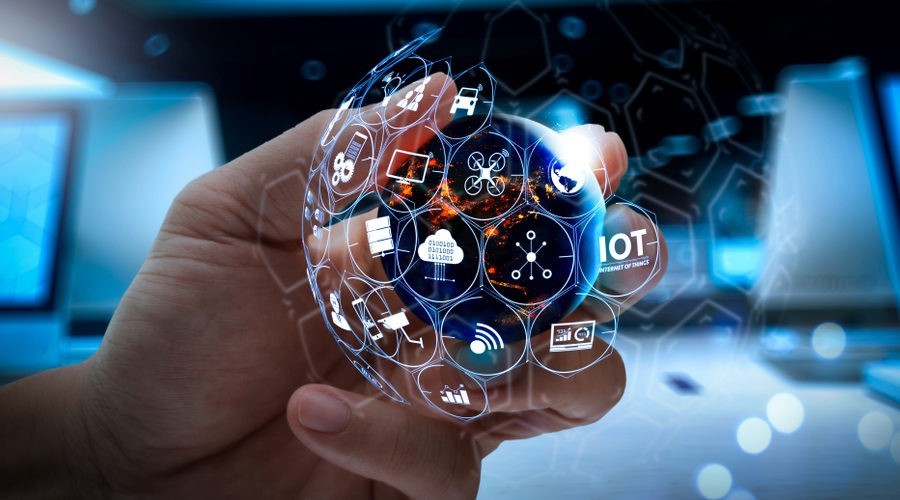
The Key Technology Shifts Transforming 2025
In the world of technology, 2025 is shaping up to be a pivotal year. Several emerging innovations are moving from the fringes into mainstream adoption. For professionals, enthusiasts or bloggers alike, staying abreast of these shifts means being ready for the next wave of disruption. Below, we explore some of the most compelling trends, why they matter, and how you might leverage them.
1. Agentic AI: Autonomous Digital Workforce
One of the standout trends for 2025 is what analysts call agentic AI — AI systems not just responding to queries, but planning and executing multi-step workflows with minimal human input. technologymagazine.com+2McKinsey & Company+2
- These AI agents can act more like “virtual coworkers” rather than simple tools, making decisions, setting tasks, coordinating with other software. McKinsey & Company
- For businesses this means: faster turnaround, reduced human drudgery, and new forms of automation.
- For us as users, it hints at tools that handle more of our routine work—writing, coding, analysis—freeing up time for creativity.
Key takeaway: Think of the next stage of AI not as just “smart chatbots” but as “smart collaborators”.
2. Quantum & Post-Quantum Technologie
6
Quantum computing has been a buzz for years; now 2025 is edging closer to real commercial impact. moderntechreport.com+2Analytics Insight+2
- On the one hand, quantum processors are being designed to tackle problems classical machines can’t—like complex cryptography, molecular simulation, optimization. Analytics Insight
- On the other hand, “post-quantum cryptography” is rapidly becoming a priority, as organizations prepare for a future where quantum machines may break current encryption. technologymagazine.com
Why it matters: - For cybersecurity: we must not only adopt stronger encryption but anticipate the quantum era.
- For industries like pharma, logistics, materials: quantum could unlock massive value.
Tip for creators/bloggers: Explain quantum in accessible terms (e.g., “computing with qubits” vs bits), and explore its real-world applications (not just the theory).
3. Connectivity and Edge: 5G, 6G & Behaviour-Driven IoT
6
Connectivity is evolving fast. The rollout of 5G is accelerating, and work on 6G is already underway. Analytics Insight+1
- Edge computing (processing data near the source) is becoming critical as IoT devices boom. transcenda.com
- A notable sub-trend: the “Internet of Behaviour” (IoB) — where connected devices + AI analyze and respond to user behaviours in real-time. transcenda.com
Implications for you: - Smarter homes, smarter cities: devices that anticipate action, not just respond.
- Data privacy and governance become vital: as more personal behaviour is monitored/analysed.
Blog angle suggestion: Cover how everyday devices (phones, wearables, home sensors) are being connected into smarter ecosystems, and what that means for consumers.
4. Spatial Computing & Immersive Experience
6
Beyond just screens, we’re increasingly working in spaces where digital and physical worlds merge. This is spatial computing: AR, VR, mixed reality — used in business, medicine, training. Bluesoft+1
- Example: surgeons using AR overlays for planning operations; designers using mixed reality to prototype products. Bluesoft
- For content creators/bloggers: immersive experiences open new storytelling formats—360° videos, interactive experiences, virtual spaces.
Tip: Explore how spatial computing can change work, education and leisure — not just games.
5. Sustainable & Green Tech: The Ethical Shift
6
Technology isn’t just about faster and smarter—it’s increasingly about better for the planet. Sustainable tech is now front and centre. Analytics Insight
- Companies are investing in eco-friendly materials, renewable energy integration, energy-efficient computing. pgrmt.com+1
- For consumers: more gadgets built responsibly, and for creators: more content opportunities around “tech for good”.
Point to emphasise: The future of tech is not only performance-driven, but purpose-driven.
6. What This Means for You (As a Reader / Creator)
- Stay informed: The pace of change is fast—understanding the “why” behind trends is more valuable than just listing the trend.
- Choose your niche: Do you focus on AI tools? Connectivity & IoT? Spatial computing? Green tech? Pick one to dig deep.
- Use plain language: Many tech topics are complex—make them accessible (e.g., “What is agentic AI? Think of it as software that doesn’t just answer questions, but takes action.”)
- Show relevance: Link the trend back to readers’ lives. Example: “What agentic AI means for your job.” Or “How 6G might affect your next smartphone.”
- Ethics & implications: Don’t just highlight the cool tech—talk about risks, privacy, job impact, sustainability.
7. Conclusion
2025 is a landmark year where convergence is the theme. AI, quantum computing, immersive tech, connectivity and sustainability are all intersecting. For creators, bloggers, technologists—this means the stories you tell can’t just be about one gadget or one software update; they must connect dots across disciplines and show how technology is reshaping our world on many levels.
Keep your content futuristic yet grounded, exciting yet responsible. Because the next wave isn’t just coming — it’s here.